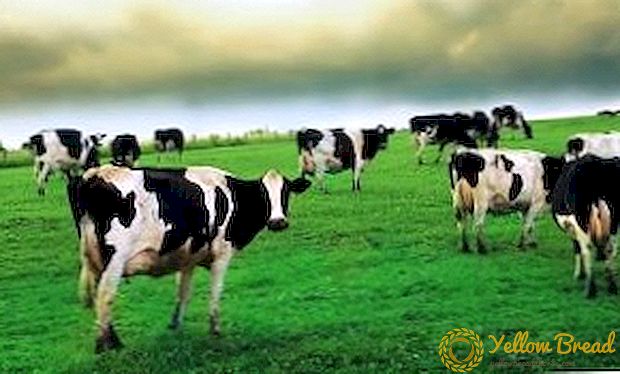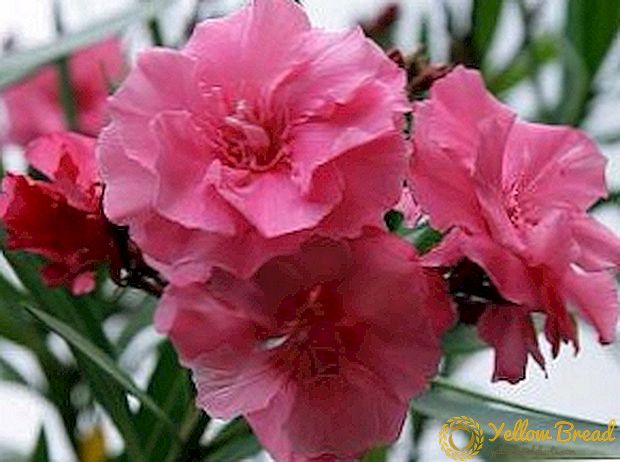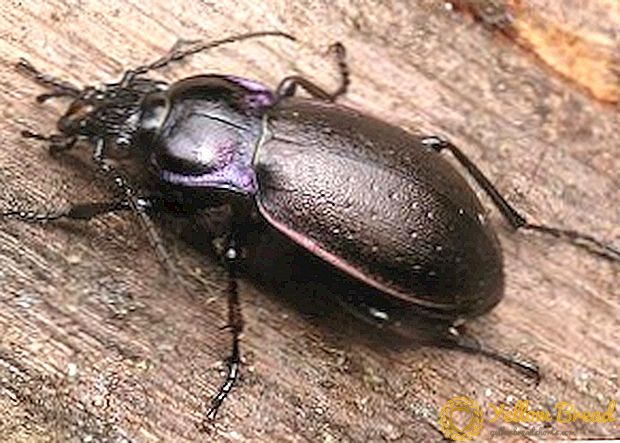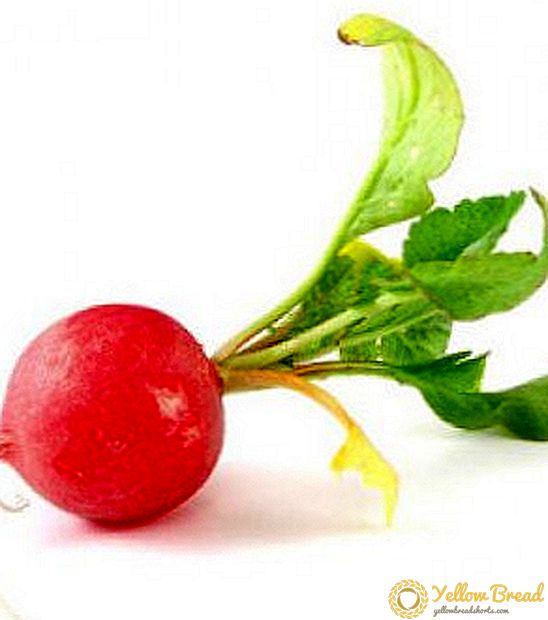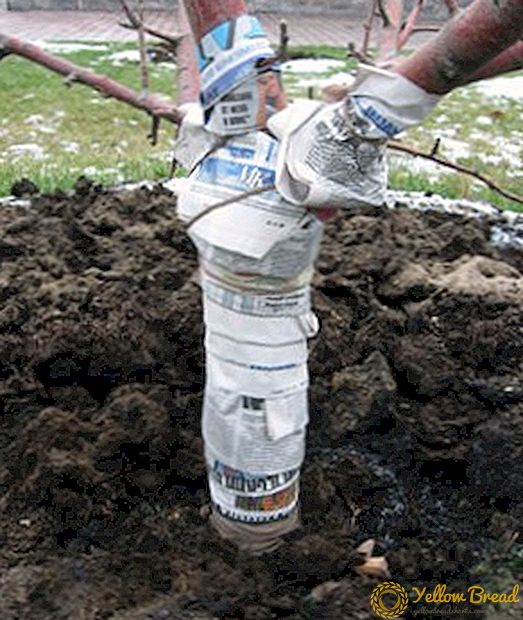
"Herman F1" - a fairly common variety of cucumbers. It can be grown with little effort in greenhouses, or in the garden in the penumbra. This hybrid brought Dutch breeders. This variety of cucumbers is early ripe, which attracts many gardeners.
- Cucumbers "Herman F1": description of the variety
- Pros and cons of a hybrid
- Sowing cucumber seeds in open ground
- Presowing seed preparation
- Dates and choice of place for cucumbers
- Seed plan
- Care and cultivation of cucumbers "Herman F1"
- Watering and loosening the soil
- Hilling bushes
- Fertilization
- Harvesting and storage of the crop
Cucumbers "Herman F1": description of the variety
Cultivar variety “Herman F1” was bred by the Dutch company Monsanto Holland, namely its subsidiary Seminis. In 2001, he passed the registration procedure in the Russian State Register. The main goal of the breeders was to create a cucumber without bitterness, with sweet pulp that is capable of autogamy (self-pollination).
Bushes this variety forms a massive, with dense fruiting. The fruits have a characteristic dark green color. The shape of the fruit resembles a cylindrical crescent with a length of 11-13 cm.The skin is covered with light white fibers, the coating is thick, dries out over time.
The hybrid does not affect powdery mildew, cucumber mosaic virus and cladosporia. Cucumbers will be very tasty both in salting and fresh. The yield of cucumbers "Herman" per square meter is about 15-18 kg. The flesh of the fruit is very juicy, tasty and, most importantly, without bitterness.
The hybrid begins to bear fruit at 38-41 day after disembarkation. "Herman F1" loves a lot of sun and does not need bee pollinating. From one bag of seeds you can collect up to 20 kg of the crop. If you plant seedlings, then with 8 sprouts you can get 10-20 kg of fruit every 2-3 weeks. 
Pros and cons of a hybrid
Cucumber "Herman" has good reviews gardeners. This hybrid has more advantages than disadvantages. And for good reason, because hybrids are derived in order to bring great yields with little effort and time. The advantages of this variety of cucumbers:
- self-pollination capacity;
- lack of bitterness;
- universality: it is possible to preserve, salt or use fresh;
- high yield;
- protected from cladosporia, powdery mildew and cucumber mosaic virus;
- early ripe variety;
- excellent taste;
- a low death rate of seeds and sprouts (almost all the planted seeds germinate and soon give fruit).
Of course, one can not do without flaws, but there are not so many of them:
- the hybrid does not tolerate the transplant;
- poor tolerance to low temperatures;
- cucumbers of this variety can affect "rust".

As you can see, there are only three flaws, and with proper care of the plant they can be avoided. But the benefits are good, and many gardeners have long grown "German F1".
Sowing cucumber seeds in open ground
This hybrid germinates very well, so you should not have problems with planting. With the right approach, this plant will only please the fruits.Cucumbers "Herman" can germinate, even if the seeds are simply thrown on the ground, so they can be planted and beginners who still do not know how to plant this vegetable. 
Presowing seed preparation
Before sowing seeds into the ground, you can (and even need) to harden a little. Calibrate the seeds. In a 5% salt solution, place the seeds and mix them for 10 minutes. All that pop up, you need to throw away - they are not suitable for disembarkation.
Before planting cucumbers "Herman" seeds should be treated with micronutrients. You can buy them, or use the usual wood ash. Seeds should be left for 4-6 hours in a solution of wood ash, after which they will absorb all the necessary trace elements.
Also seeds can be processed and hardened thermally. To do this, they are kept at 48-50 ºС for two days.
Dates and choice of place for cucumbers
This is a thermophilic plant, so the landing should take place no earlier than the beginning of May.The daytime temperature should reach at least 15 ºС, and at night it should not fall below 8-10 ºС. The soil should be aerated (perekopan and clouded rake). It is advisable to make mulch in the form of rotted leaves.
"Herman F1" is best planted in partial shade. It would be good if last year corn or spring wheat grew in the sown area.
Seed plan

Seeds can be planted in the hole. The distance between them should be about 25-30 cm. The distance between rows should not be less than 70 cm - so the bush can grow, and it will be more convenient for you to harvest.
Nitrogenous fertilizers or humus and sand are added to the wells along with the seeds. Some warm water is also added. Top can be sprinkled with a thin layer of humus and cover with a film before the rising sprouts.
Care and cultivation of cucumbers "Herman F1"
Cucumbers "Herman" after planting require special care. But do not be afraid - you will not spend a lot of time on caring for plants.
Watering and loosening the soil
When cucumbers sprout, they need to be watered regularly. Watering should be done every three days, preferably in the evening. On 1 square meter of soil should be about a bucket of water (10 liters).After such irrigation, the soil is taken by a crust and water and minerals do not reach the root of the plant, so the soil must be loosened.
Loosening can be done with a rake, hoes or cultivators. The best time for this procedure is the morning or evening of the next day after watering. Loosening is carried out until the earth is leveled and all the lumps and lumps are removed.
This process should be carried out carefully to avoid damage to the root of the plant. It is not recommended to deepen hoe or rake to a depth of more than 10 cm.
Hilling bushes
Hilling should be done very carefully, as there is always a risk of damaging the root. Some agronomists with experience do not recommend spud cucumber bushes. However, if you have such a desire, then it can be done. Hilling advantages:
- additional roots grow;
- the bush does not flood and does not form a crust;
- Minerals are better.
Fertilization

Cucumbers "Herman" by their characteristics are practically not afraid of different viruses and give an excellent harvest. But the harvest can always be increased by adding a little fertilizer. Fertilizer can be both mineral and organic fertilizers. For the entire growing season, you need 3-4 times to fertilize. Both root and non-root method of fertilizer are suitable.
It is best to feed the cucumbers 4 times per season. The first time should be applied on the 15th day after planting, the second time - during the flowering period, the third - during the fruiting period. The fourth time you need to fertilize at the end of fruiting, so that new flowers and fruits appear.
If fed with organic fertilizers, then they need to be made at the root. Almost all organic mineral substances are introduced into the soil as root fertilizers.
Organic fertilizers consist of substances of animal and vegetable origin, which,while decomposing, they form mineral substances, while carbon dioxide is released into the surface layer, which is necessary for photosynthesis of plants.
Mineral fertilizers contain nutrients in the form of various mineral salts. Depending on what nutrients are contained in them, fertilizers are divided into simple and complex. All substances that are sprayed plants belong to the foliar type of fertilizer.
Soils usually have all the nutrients the plant needs. But often individual elements are not enough for satisfactory growth of plants.
Harvesting and storage of the crop

Cucumbers "Herman" are suitable for growing both indoors and in the open field. On the yield is not much affected. Is that in areas with a cold summer climate this hybrid in the greenhouse will be a little better.
The harvest of cucumbers begins on the 38-41 day after planting, and continues until the first frost.If you fertilize the bushes with nitrogenous minerals, then the yield will be much greater, and you will have to harvest more often. In general, cucumbers need to be collected every 1-2 days in the morning or in the evening.
Fruits 9-11 cm long can be canned, all others are suitable for salting. But the most important thing is not to let the cucumbers outgrow, so that they do not become "yellow ones".
- Fresh fruit can be wrapped in a plastic bag and put in a cold place. So you can extend the shelf life by 5-7 days.
- Before the start of frost, cucumber bushes can be pulled out along with the fruits. The plant is placed in a vessel with water down the roots. Pour a lot of water is undesirable, it is best to 10-15 cm from the bottom of the vessel, and change it every 2-3 days. So cucumbers will last about two weeks.
- Fruits can be coated with egg white, while they can remain fresh for two or three weeks. When using this method, cucumbers will not need cold.
- If you live near a small pond, then a barrel of cucumbers can be immersed in it. But the pond should not freeze to the very bottom in extreme cold. By preserving cucumbers in this way, you will eat fresh fruit the whole winter.


